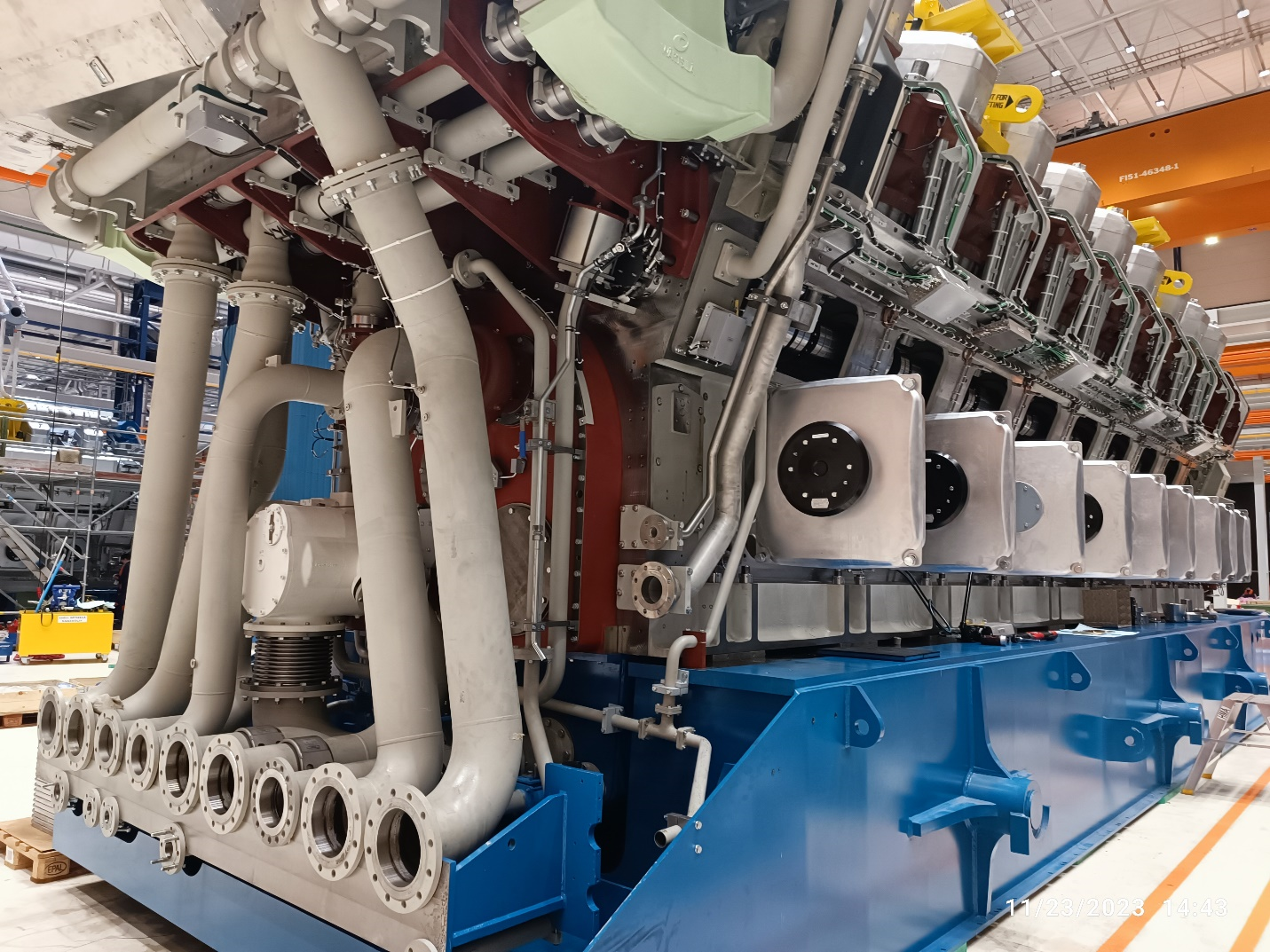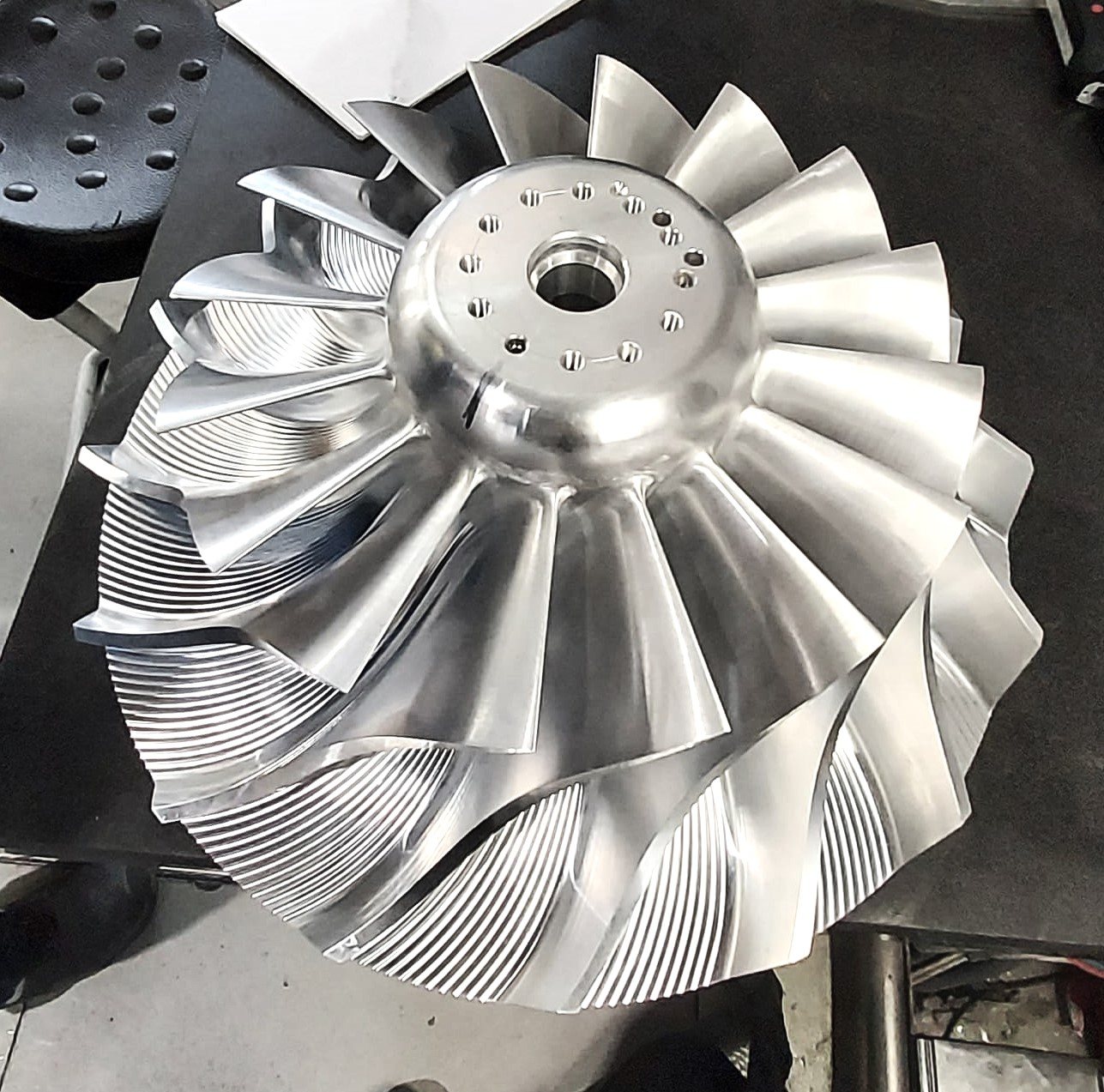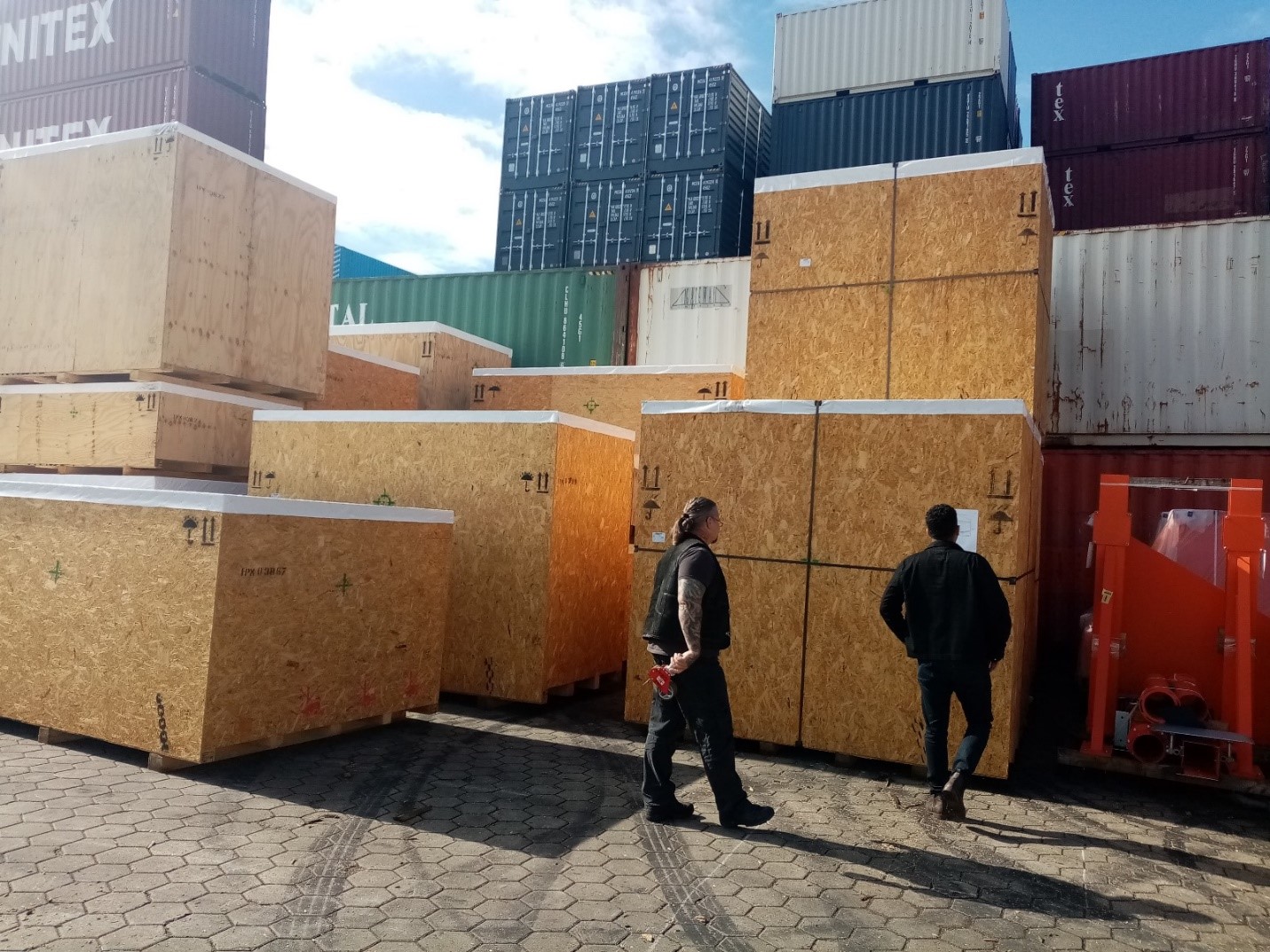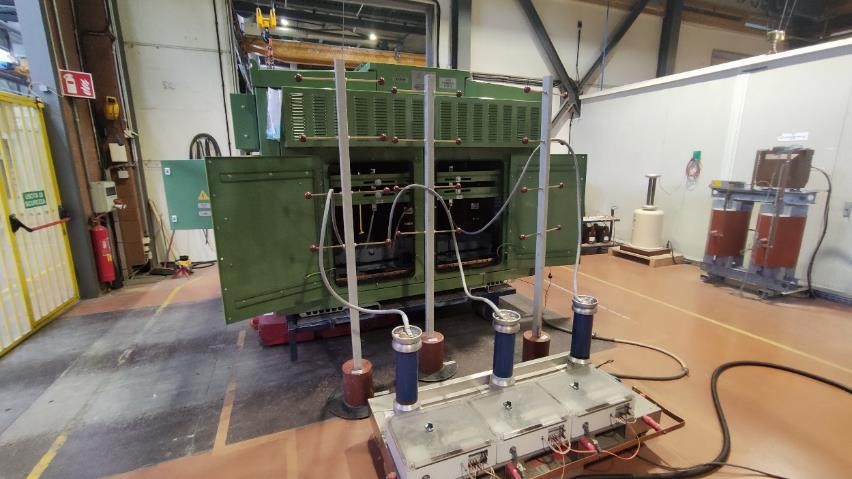Abstract
This article is described the “Flange final inspection” and related steps, which are commonly controlled during production and in a final inspection by a third-party agency representative. Some other steps were mentioned in the previous part: Flange Inspection – Part 1
Introduction
However, in some great projects, based on the agreement of customer and manufacturer during the production inspection could be performed by the third party inspection, but it should be mentioned in the most of the purchases the flanges are produced already and it is not possible to witness some points during the production and in fact, “flange final inspection” could be done by TPIA inspector. As it was described in the previous article and below points, there are some specified steps in the inspection and test plans, which the inspection will be carried out according to them and related reference procedures and standards.
Moreover, a list of the common standards was mentioned in this article.
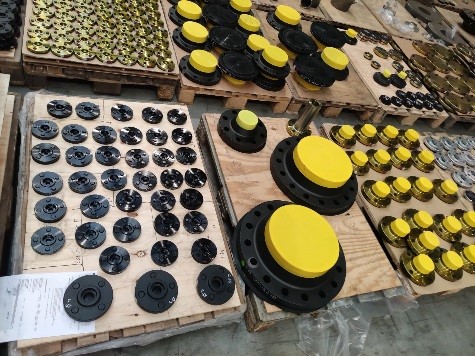
1. Shell Pressure test:
The shell pressure test should be applied on the flanges in specified pressure and duration with water e.g. 1.5-time pressure rating on 60, 120 or 180 seconds due to flange size with water containing corrosion inhibitor under 50 ℃ based on the ASME B16.5. No visible leakage is permitted through the pressure boundary wall.
2. Flange final inspection-Marking check:
The marking must include the mandatory information specified in the standard. Usually, the below information is engraved on the produced flange:
- Manufacturer’s Name or Trademark
- Rating Designation
- Material Designation
- Melt Designation – as required by the specification
- Valve Trim Identification – valves only when required
- Size Designation
- Identification of Threaded Ends
- Ring-Joint Facing Identification
- Permissible Omission of Markings
Based on the reference standard or customer’s request, maybe some extra information is to be added to the above list.
The marking of the flange after the transplant should be checked whether it is completed or not.
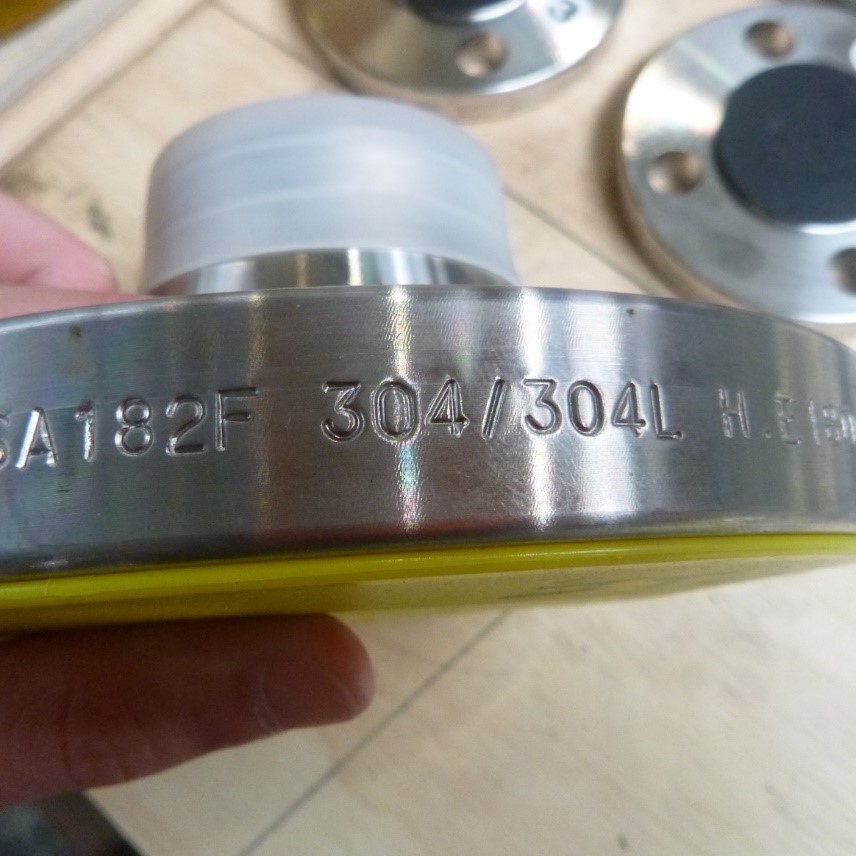
3. Why the PMI TEST should be done?
A Positive Material Identification Test is performed on the flanges to check the conformity of the chemical composition of the alloy steel and steel with the reference standard of the material. PMI as a cheap and fast non-destructive test achieves the results to be compared with the acceptance criteria under the witness of the technical inspector.
4. Pipe Flange Standards
4.1. ASME STANDARDS
- ASME B16.1 – Gray Iron Pipe Flanges and Flanged Fittings: Classes 25, 125, and 250
- ASME B16.5 – Pipe Flanges and Flanged Fittings: NPS 1/2 through NPS 24 Metric/Inch Standard
- ASME B16.20 – Ring Joint Gaskets and Grooves for Steel Pipe Flanges
- ASME B16.21 – Nonmetallic Flat Gaskets for Pipe Flanges
- ASME B16.24 – Cast Copper Alloy Pipe Flanges and Flanged Fittings: Classes 150, 300, 600, 900, 1500, and 2500
- ASME B16.34 – Large Diameter Steel Flanges (NPS 26 through NPS 60)
- ASME B16.36 – Orifice Flanges
- ASME B16.42 – Ductile Iron Pipe Flanges and Flanged Fittings: Classes 150 and 300
- ASME B16.47 – Large Diameter Steel Flanges (NPS 26 Through NPS 60)
4.2. ASTM STANDARDS
- ASTM A105 – Specification for Carbon Steel Forgings for Piping Applications
- ASTM A182 – Specification for Forged or Rolled Alloy Steel Pipe Flanges, Forged Fittings, and Valves and Parts for High-Temperature Service
- ASTM A193 – Specification for Alloy-Steel and Stainless Steel Bolting Materials for High-Temperature Service
- ASTM A194 – Specification for Carbon and Alloy Steel Nuts for Bolts for High Pressure and High-Temperature Service
- ASTM A694 – Specification for Carbon and Alloy Steel Forgings for Pipe Flanges, Fittings, Valves, and Parts for High-Pressure Transmission Service
- ASTM A707 – Specification for Flanges, Forged, Carbon, and Alloy Steel for Low-Temperature Service
4.3. AWWA STANDARDS
- AWWA C115 – Standard for Flanged Ductile Iron Pipe with Ductile-Iron or Gray-Iron Threaded Flanges
4.4. ISO STANDARDS
- ISO 5251 – Stainless steel butt-welding fittings
4.5. PIPE FLANGE SPECIFICATION, BSI
- BS 10 – Specification for Flanges and Bolting for Pipes, Valves, and Fittings
- BS 3293 – Specification for Carbon Steel Pipe Flanges (over 24 inches nominal size) for the Petroleum Industry
- BS 4504 – Specification for Steel Flanges Circular Flanges for Pipes, Valves and Fittings
- ISO 7005-1 – Metallic Flanges – Part 1: Steel Flanges (this is substantially the same as BS 4504)
